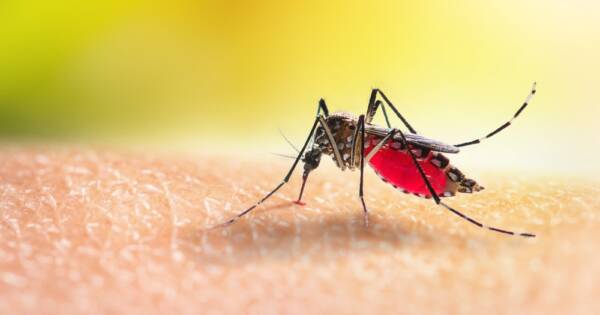Guillain-Barré Syndrome is a rare but serious neurological disorder in which the body’s immune system mistakenly attacks the peripheral nerves. This can lead to muscle weakness, tingling sensations, loss of reflexes, and, in severe cases, paralysis. The condition often progresses rapidly, making early recognition and medical intervention critical. Understanding its symptoms, risk factors, and available treatment options is essential for timely care and improving the chances of a full recovery.
What is Guillain-Barré Syndrome?
Guillain-Barré syndrome is a rare neurological disorder in which the body’s immune system mistakenly attacks the nerves. This leads to inflammation and damage to the myelin sheath, the protective layer that surrounds the nerves. As a result, nerve signals are slowed down or blocked, leading to muscle weakness and other symptoms.
The exact cause of Guillain-Barré syndrome is unknown, but it is often triggered by an infection, such as the flu or cytomegalovirus. In some cases, it may also be associated with certain medical procedures, such as surgery or vaccination. However, these cases are extremely rare.
Guillain-Barré syndrome can affect people of all ages, but it is most common in adults between the ages of 30 and 50. Men are slightly more likely to develop the disorder than women.
Understanding the Neurological Disorder
The symptoms of Guillain-Barré syndrome can vary depending on the severity of the nerve damage. In most cases, the symptoms start with weakness and tingling in the legs, which then spreads to the arms and upper body. As the condition progresses, individuals may experience difficulty walking, problems with balance, and even paralysis.
In severe cases, Guillain-Barré syndrome can lead to respiratory failure, requiring mechanical ventilation. Fortunately, with early diagnosis and treatment, most people with Guillain-Barré syndrome make a full recovery. However, some individuals may experience residual weakness or fatigue for several months or even years.
The diagnosis of Guillain-Barré syndrome is based on the individual’s symptoms and a physical examination. Doctors may also order tests, such as nerve conduction studies and electromyography, to confirm the diagnosis and assess the extent of nerve damage.
Treatment Options and Early Intervention
There is no cure for Guillain-Barré syndrome, but treatment can help to speed up recovery and reduce the risk of complications. The primary treatment options include plasma exchange and immunoglobulin therapy.
Plasma exchange involves removing the liquid part of the blood (plasma) and replacing it with fresh plasma or a salt solution. This helps to remove the harmful antibodies that are attacking the nerves. Immunoglobulin therapy involves giving high doses of antibodies to help block the immune system’s attack on the nerves.
Both plasma exchange and immunoglobulin therapy are effective in treating Guillain-Barré syndrome, and the earlier treatment is started, the better the chances of a full recovery. In addition to these treatments, supportive care may also be necessary, such as mechanical ventilation, pain management, and physical therapy.
Symptoms and Progression of Guillain-Barré Syndrome
The initial symptoms of Guillain-Barré syndrome often include tingling sensations and weakness starting in the feet and legs, which can progress upwards to the arms and face. As the disorder advances, muscle weakness can worsen, potentially leading to paralysis.
In addition to motor symptoms, some individuals may experience abnormal heart rhythms, blood pressure fluctuations, and difficulties with bladder and bowel functions. Pain is also a common symptom, particularly in the form of aching or cramping, which can be severe. The progression of symptoms usually peaks within two to four weeks, followed by a plateau phase, and then a gradual recovery period.
Causes and Risk Factors
The precise cause of Guillain-Barré syndrome remains unknown, but it is generally believed to be an autoimmune disorder. The syndrome often follows infections such as Campylobacter jejuni, the bacteria commonly associated with food poisoning, as well as viruses like Epstein-Barr, Zika, and HIV. Other triggers may include surgery, trauma, or certain vaccinations, although these instances are very rare.
Risk factors for developing Guillain-Barré syndrome include a recent infection or having a medical condition that compromises the immune system. Genetic predispositions are also being studied as potential risk factors, although conclusive evidence is still pending.
Rehabilitation and Long-Term Outlook
Recovery from Guillain-Barré syndrome can be lengthy, often requiring months to years. Rehabilitation plays a crucial role in helping individuals regain strength and function. Physical therapy is essential for improving mobility, balance, and muscle strength, while occupational therapy helps patients re-learn daily activities.
In some cases, speech therapy may be necessary if the muscles involved in speech are affected. Emotional support and counseling can also be beneficial, as coping with the disorder and its long-term effects can be challenging. While most individuals eventually recover fully, some may experience lingering effects such as chronic pain, fatigue, or residual weakness.
Learn More About Guillain-Barré Syndrome
Guillain-Barré syndrome is a complex and rare neurological disorder characterized by the immune system’s attack on the nerves. Understanding the symptoms, potential causes, and treatment options is crucial for managing the condition effectively.
Early diagnosis and intervention are important. Rehabilitation and ongoing support may also be necessary for some individuals. By raising awareness and providing comprehensive care, we can help those affected by Guillain-Barré syndrome lead fulfilling lives despite the challenges posed by this disorder.




